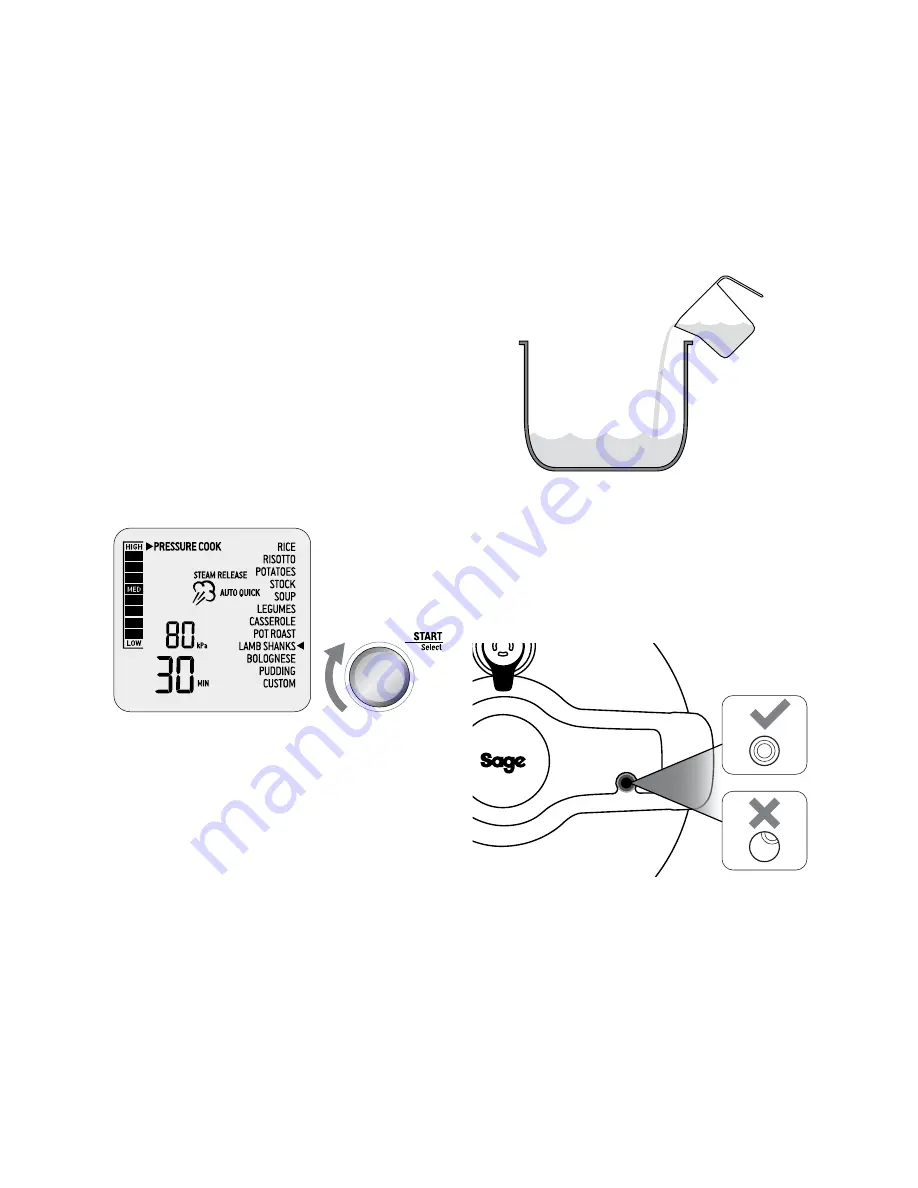
18
PRESSURE COOK
The PRESSURE COOK setting is a great
option for cooking succulent roasts,
flavoursome casseroles, delicious soups and
even desserts in a fraction of the time and
energy they take by conventional methods.
Pressure Cooking is a method of cooking food
in a small amount of liquid with a sealed lid
that retains steam inside and builds pressure.
It is the increase in pressure that raises
temperature of the liquid and steam inside to
well above boiling point and therefore allows
food to be cooked up to 70% faster.
1. Turn the START/SELECT dial until the
indicator reaches the PRESSURE COOK
setting. Press the START/SELECT dial to
confirm.
2. Turn the START/SELECT dial until the
indicator on the right hand side of the LCD
reaches the desired setting.
3. The top figure on the LCD screen indicates
the preset pressure level for the selected
setting. Turn the TEMPERATURE/
PRESSURE dial to the left to reduce the
pressure or to the right to increase pressure.
Pressure can be adjusted from
20 kPa (LOW) to 80 kPa (HIGH).
4. The bottom figure on the LCD screen
indicates the preset cooking time for the
selected setting. Turn the TIME dial to the
left to reduce the cooking time or to the
right to increase the cooking time. Time can
be adjusted up to 2 hours.
5. The steam icon on the LCD screen
indicates the preset steam release method
for the selected setting. Press the STEAM
RELEASE button to select between ‘AUTO
QUICK’, ‘AUTO PULSE’ and ‘NATURAL’
steam release.
6. Place food into the removable cooking bowl.
Ensure there is at least 1L of combined food
and liquid in the bowl.
MINIMUM OF 1L
OF COMBINED
FOOD & LIQUID
7. Close the lid and turn the lid knob
clockwise to lock into place. The
cooker alert will sound when the lid
has been locked. Check that the safety
locking pin is properly aligned with the
opening in the lid arm and is not restricted
in any way.
ALIGN PIN
BEFORE START
Summary of Contents for BPR700
Page 1: ...the Fast Slow Pro Instruction Book BPR700...
Page 8: ...8 Components C B D F G H J K I L M N A P O E Q R S T...
Page 29: ...29 Notes...
Page 30: ...30 Notes...
Page 31: ......





























